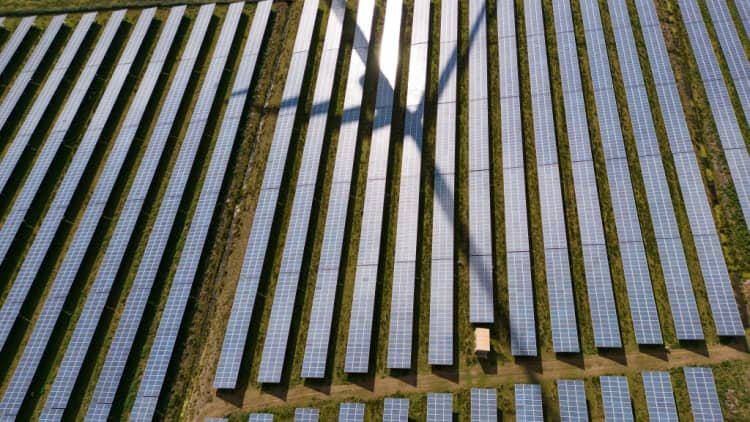

The energy sector requires new companies with the mentality of a Tesla or Amazon to push forward in the years ahead, according to the ex-CEO of energy infrastructure powerhouse Snam.
“It took a Tesla to disrupt … the car manufacturing sector, it took an Amazon to disrupt the retail market, and I think it’s going to take new companies to disrupt the energy sector,” Marco Alvera, who is now the CEO of Tree Energy Solutions, a firm looking to develop projects that use green hydrogen, said.
Alvera, who was speaking to CNBC’s Steve Sedgwick during a recent interview, went on to emphasize the importance of companies adopting an approach centered around dynamism.
“I think it’s always the agile companies that can really do … kind of a zero-base design and build the whole organization around the purpose, around the speed of execution, around the seriousness,” he said.
“The time it takes Amazon to build one of their warehouses — there’s no way a conventional company can do that,” he went on to state.
“This is about taking some of the West Coast mentality, some of the Tesla mentality, some of the, you know, ‘we can do it and we can do it quickly’ attitude and delivering faster than a conventional approach would be able to deliver,” he said.
Electric vehicle firm Tesla and tech giant Amazon are two of the world’s most recognizable companies. Alongside their core businesses, both have made plays in the energy sector over the past few years.
Tesla, for example, has ventured into battery storage, while Amazon has been involved in large wind and solar investments.
Alvera’s comments come at a time of huge change for the energy industry, with major economies around the world looking to move away from fossil fuels in the long term whilst simultaneously grappling with volatile market conditions and uncertainty.
The European Union, for instance, is looking to ramp up its renewable energy installations over the next few years as it pursues its target of becoming climate neutral by the year 2050.
The EU’s executive branch, the European Commission, sees hydrogen as being an important tool in this shift, with its president, Ursula von der Leyen, expressing support for it during her State of the Union address in September.
Described by the International Energy Agency as a “versatile energy carrier,” hydrogen has a diverse range of applications and can be deployed in a wide range of industries.
It can be produced in a number of ways. One method includes electrolysis, with an electric current splitting water into oxygen and hydrogen. If the electricity used in this process comes from a renewable source such as wind or solar then some call it “green” or “renewable” hydrogen.
The vast majority of hydrogen generation is currently based on fossil fuels, but the commission has said it wants 40 gigawatts of renewable hydrogen electrolyzers to be installed in the EU by 2030.

It’s within this environment that companies like Tree Energy Solutions are looking to gain a foothold in the emerging green hydrogen sector.
At the start of October, it was announced that TES and Australia’s Fortescue Future Industries would work together on a major green hydrogen project.
According to a statement dated Oct. 5, FFI will invest 30 million euros (around $29.76 million) in TES.
“The first phase of this partnership is to jointly develop and invest in the supply of 300,000 tonnes of green hydrogen with final locations being currently agreed,” the statement added.
During his interview with CNBC, Alvera was asked whether we had the technology to get large-scale green hydrogen out there in masses, and who was leading the technological race within the sector.
“We absolutely have the technology,” he replied. “China [is leading], I would say, by a big margin on solar panels and on the electrolyzers,” he added. “There’s European technologies, there’s U.S. technologies.”
“So we have the technologies, what we don’t have is a manufacturing capability to scale those technologies up in time.”
“And that’s where I would like to see more policy focus and more entrepreneurs really investing [in] … the factories.”







